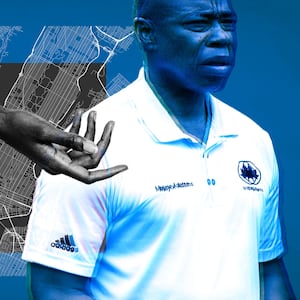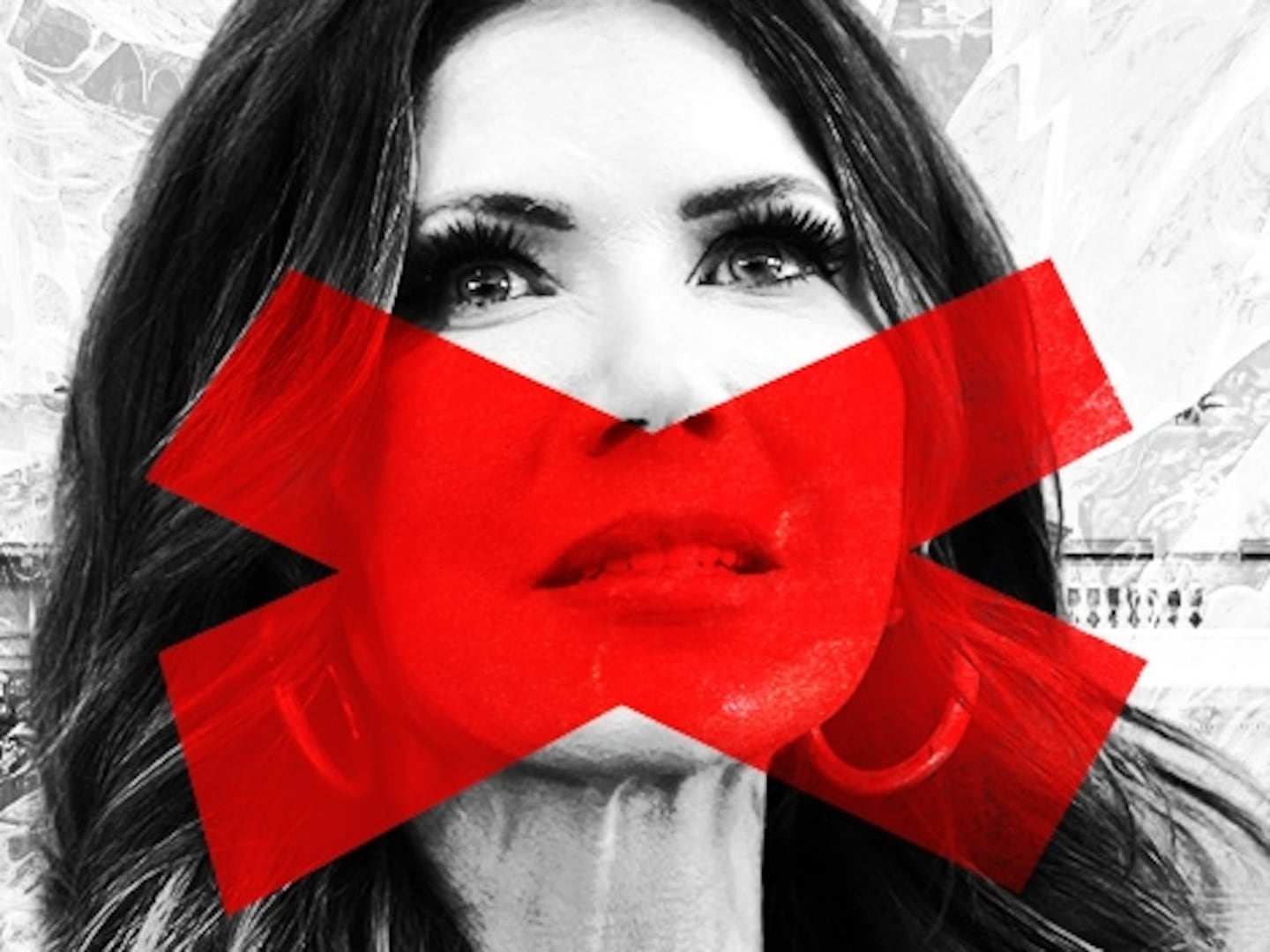Since the enactment of the 1965 Voting Rights Act, Black politics has been limited to either urban governance or representing congressional districts that follow the agenda of the national parties. The inability of leaders to exercise power in the states has been a weakness since the demise of the Reconstruction Era)" href="https://urldefense.com/v3/__https://www.nps.gov/reer/learn/historyculture/historyculture.htm__;!!LsXw!SFNmn15QAaf8vcq3tox8WOZADbiq286zxBs0ftmuYVcnXtw7_oVKMYgt2CJkGmtS8ft14RGSRwsAJMFkawMnWlThuPPVYJpcdA$">Reconstruction Era. But the 2022 midterms introduced an unprecedented number of state campaigns that challenged historic barriers of race and power.
Most importantly, the midterms addressed a lingering question in the Black community since the Obama presidency: what political goals should its leaders pursue?
As Democrats and Republicans assess the midterm results, it’s clear that the elections were a bellwether of change in Black politics. That’s because they charted a new course toward the equitable management of state governments, most notably in the South. The states oversee some of the most important aspects of material and cultural life.
Looking ahead, if the McKinsey Institute for Black Economic Mobility is right, state leaders would be wise to articulate an agenda for economic equity: “We estimate a $220 billion annual disparity between Black wages today and what they would be in a scenario of full parity.” Heading into the 2024 elections, state leaders could scrutinize the hiring of Black skilled labor for projects funded under President Joe Biden’s $1.2 trillion infrastructure law; after all, the Congressional Black Caucus rescued the industrial plan that is quietly administered by former New Orleans Mayor Mitch Landrieu today.
Of course, some critics may challenge the notion of the Black community—and its political leaders—as a reliable voting bloc with a common history and destiny. These days, many prefer to identify as individuals with intersectional identities outside of racial heritage. Nonetheless, for historical reasons, Black people are as close to a monolithic culture as exists in the American experience—second only to the monolithic culture of the white South.
For example, John Blassingame’s, The Slave Community: Plantation Life in the Antebellum South)" href="https://urldefense.com/v3/__https://www.amazon.com/Slave-Community-Plantation-Antebellum-South/dp/0195025636__;!!LsXw!SFNmn15QAaf8vcq3tox8WOZADbiq286zxBs0ftmuYVcnXtw7_oVKMYgt2CJkGmtS8ft14RGSRwsAJMFkawMnWlThuPMkTL2dzw$">The Slave Community: Plantation Life in the Antebellum South, describes how “the American slave was able to retain many African cultural elements and an emotional contact with his motherland. This contact, however tenuous, enabled the slave to link European and African forms to create a distinctive culture.”
The midterms experimented with Black-led state campaigns with the potential to address the pocketbook issues of the community. The methods were geared to different circumstances on the ground and have advantages and drawbacks as such.

Governor Gretchen Whitmer (L) and Lieutenant Governor Garlin Gilchrist II (R) during a campaign rally.
Photo by Dominick Sokotoff/SOPA Images/LightRocket via Getty ImagesThe “Georgia Model” and New Capitals of Black America
Let’s start with the campaigns in Georgia and Maryland, where Democrats implemented a new strategy for Black mobilization and coalition building. The “Georgia Model'' was adapted from the concept of the base election and builds on preconditions like large Black populations and favorable migration trends. It uses the power of Black culture to educate and mobilize the folk around local issues of economic equity. The incumbent Democratic U.S. Sen., the Rev. Raphael Warnock, and the two-time Democratic gubernatorial candidate, Stacey Abrams, are foremost practitioners of the model.
About 2018, they began galvanizing Black political and business groups in Atlanta, Augusta, and Savannah and church networks like Warnock’s 6,000-member Ebenezer Baptist Church. They also led civic groups like Fair Fight)" href="https://urldefense.com/v3/__https://fairfight.com/__;!!LsXw!SFNmn15QAaf8vcq3tox8WOZADbiq286zxBs0ftmuYVcnXtw7_oVKMYgt2CJkGmtS8ft14RGSRwsAJMFkawMnWlThuPOGUsNJQw$">Fair Fight, started by Abrams to combat voter suppression, and the New Georgia Project)" href="https://urldefense.com/v3/__https://newgeorgiaproject.org/about/__;!!LsXw!SFNmn15QAaf8vcq3tox8WOZADbiq286zxBs0ftmuYVcnXtw7_oVKMYgt2CJkGmtS8ft14RGSRwsAJMFkawMnWlThuPPJAjzBvQ$">New Georgia Project to mobilize voters. Democrats shocked the nation with the historic elections of Warnock and Jon Ossoff to the U.S. Senate, and Biden’s Georgia win was crucial to his winning the presidency in 2020.
The big question was whether they could hold on to the gains in the midterm.
During the midterm, the Warnock and Abrams campaigns ran on an agenda of pocketbook issues such as health insurance, social security, affordable housing, and occupational mobility. Abrams, in particular, spotlighted the dire economic circumstances of Black men with a proposal for a “Black Men’s Agenda)" href="https://urldefense.com/v3/__https://staceyabrams.com/policy/black-mens-agenda/__;!!LsXw!SFNmn15QAaf8vcq3tox8WOZADbiq286zxBs0ftmuYVcnXtw7_oVKMYgt2CJkGmtS8ft14RGSRwsAJMFkawMnWlThuPMRXClIyg$">Black Men’s Agenda.” It designated $5 billion in targeted investments in small business creation, health insurance, and apprenticeships in the construction and entertainment industries.
Georgia law requires candidates in a general election to win by 50 percent or face a run-off election—and the Senate race between Warnock and the Republican challenger, Herschel Walker, is headed to a runoff election on December 6. Meanwhile, after Abrams conceded to incumbent Gov. Brian Kemp in a bruising campaign and second-consecutive defeat, Democrats have to accept that she’s probably a better organizer than a retail politician.

Sen. Raphael Warnock (D-GA) speaks at a campaign event at Atlanta University Center Consortium Campus on Election Day.
Photo by Megan Varner/Getty ImagesIn Maryland, Black Democrats adopted a version of the Georgia model with outstanding results. They mobilized the community around an agenda of wealth and civil rights concerns; moreover, they gained support from state party leaders, school teachers, industrial unions, veterans, and moderate whites and ethnic groups. Voters handily elected as governor Wes Moore)" href="https://urldefense.com/v3/__https:/wesmoore.com/__;!!LsXw!Vo0S9DOTbR9m1pRrcQLLS-SR6z9NXVSzRiMosvg2I7s1-IX_IoajGh7mH-BudhJ9Lo5uG6IkY2MFUApFi1vcwtE-mrjl1rbzKw$">Wes Moore—an author, educator, and army veteran—who campaigned on an agenda of pocketbook issues. Among his anti-poverty ideas were state-funded savings bonds for poor children. He’s the third Black person to be elected governor in the nation’s history.
Maryland voters also elected attorney general Anthony Brown)" href="https://urldefense.com/v3/__https:/www.anthonybrown.com/__;!!LsXw!Vo0S9DOTbR9m1pRrcQLLS-SR6z9NXVSzRiMosvg2I7s1-IX_IoajGh7mH-BudhJ9Lo5uG6IkY2MFUApFi1vcwtE-mrjHDc2T-Q$">Anthony Brown, a congressman and former lieutenant governor, who campaigned on protecting voting rights, reproductive rights, gun violence prevention, and criminal justice reform. In short, Black Democrats proved that the Georgia model could be replicated to make history in the “Free State.”
To hold the gains, Georgia and Maryland leaders might consider bolstering the voting base by recruiting middle-class professionals, skilled workers, students, and retirees.
The Georgia Model in Other Southern States
With demonstrated success in two states, the question is whether the Georgia model can be effective in Southern states with smaller Black populations.
North Carolina has favorable preconditions—like a 20 percent Black population, a base in Charlotte, and a steady flow of young professionals. Activists even copied Georgia’s grassroots strategy with the New North Carolina Project)" href="https://urldefense.com/v3/__https://newnorthcarolinaproject.org/__;!!LsXw!SFNmn15QAaf8vcq3tox8WOZADbiq286zxBs0ftmuYVcnXtw7_oVKMYgt2CJkGmtS8ft14RGSRwsAJMFkawMnWlThuPPZF4P9CQ$">New North Carolina Project and centered pocketbook issues. And yet, Democrat Cheri Beasley narrowly lost to Republican Ted Budd in a spirited Senate election.
Meanwhile, Alabama and Arkansas fielded Black Democratic candidates for Senate and governor with disappointing results: In Alabama, William Boyd and Yolanda Flowers were blown out, respectively. In Arkansas, Natalie James and Chris Jones lost as well. And in Florida, Rep. Val Demings’ conceded to the two-term incumbent Sen. Marco Rubio. Likewise, in Louisiana, Democrat Gary Chambers was smashed by the incumbent Republican Senator John Kennedy.
In South Carolina, Republican Sen. Tim Scott won re-election. Along with Warnock and Cory Booker, Scott is one of just three Black members of the Senate.
Black Democrats showed signs of progress in North Carolina but will have to recalibrate in other states. It may require a prolonged reliance on the old and frustrating pattern of backing moderate white men—a model that propelled Jimmy Carter in Georgia and Bill Clinton in Arkansas. In North Carolina, it’s the current Gov. Roy Cooper.

North Carolina Democratic Party member Diane Robertson reacts as she follows election results at an election night party for Democratic U.S. Senate candidate Cheri Beasley.
Allison Joyce/Getty ImagesThe “Rainbow Coalition” and the Limits of Black Influence
The Rainbow Coalition model relies on professional politicians—who often happen to be Black—representing a diverse coalition of interest groups. The model originated in 1969 in Chicago as a strategy of the Black Panther Party under deputy chairman Fred Hampton)" href="https://urldefense.com/v3/__https://www.pbs.org/independentlens/documentaries/the-first-rainbow-coalition/__;!!LsXw!SFNmn15QAaf8vcq3tox8WOZADbiq286zxBs0ftmuYVcnXtw7_oVKMYgt2CJkGmtS8ft14RGSRwsAJMFkawMnWlThuPOIXJfDcw$">Fred Hampton. He initiated an alliance with radical groups that crossed lines of race and ethnicity and was dubbed the Rainbow Coalition.
In 1984, Jesse Jackson revamped the concept for a populist style of electoral politics under his “Rainbow Coalition”)" href="https://urldefense.com/v3/__https://www.history.com/news/jesse-jackson-rainbow-coalition__;!!LsXw!SFNmn15QAaf8vcq3tox8WOZADbiq286zxBs0ftmuYVcnXtw7_oVKMYgt2CJkGmtS8ft14RGSRwsAJMFkawMnWlThuPOZjr9wWw$">“Rainbow Coalition” presidential campaign, based in Chicago. It was updated by Barack Obama for his successful Chicago campaigns to represent Illinois in the Senate and for president. The model has been effective in mobilizing coalitions for limited policies like Obamacare and minimum wage increases, among others.
While a strength of the model is its multicultural diversity, that has been a weakness as well. Every election cycle, pundits tend to overstate the monolithic nature (and turnout potential) of groups in rainbow coalitions. By contrast, Black turnout is generally reliable and leaders have a responsibility to maximize the leverage of equity, as argued by Stokely Carmichael and Charles Hamilton in Black Power: The Politics of Liberation in America.
In state affairs, the rainbow model has advanced center-left victories in places where the white vote is evenly split, and the turnout of the Black voters can swing the election. In New York, for instance, Blacks compose 17 percent of the population and are key factors in the state coalition; yet, the leaders tend to punch below their weight. While Blacks hold a number of major offices—such as the re-elected state Attorney General Letitia James)" href="https://urldefense.com/v3/__https://ag.ny.gov/about-attorney-general__;!!LsXw!SFNmn15QAaf8vcq3tox8WOZADbiq286zxBs0ftmuYVcnXtw7_oVKMYgt2CJkGmtS8ft14RGSRwsAJMFkawMnWlThuPPPwxu5GQ$">state Attorney General Letitia James and Lt. Gov. Antonio Delgado—their agenda is wedded to the priorities of stronger coalition groups.
Democrats applied the rainbow model to seemingly quixotic campaigns in the midterm. In Massachusetts, however, the former Boston city councilor Andrea Campbell became the state’s first Black state attorney general. An intriguing midwestern politician is Michigan’s Lt. Gov. Garlin Gilchrist II)" href="https://urldefense.com/v3/__https://www.michigan.gov/whitmer/ltgov__;!!LsXw!SFNmn15QAaf8vcq3tox8WOZADbiq286zxBs0ftmuYVcnXtw7_oVKMYgt2CJkGmtS8ft14RGSRwsAJMFkawMnWlThuPNttlde4Q$">Lt. Gov. Garlin Gilchrist II, a Detroit progressive, who ran successfully with incumbent Gov. Gretchen Whitmer; it’s a state with a roughly 14 percent Black population and a base in Detroit.
One of the more exciting U.S. Senate races was Mandela Barnes’)" href="https://urldefense.com/v3/__https://mandelabarnes.com/__;!!LsXw!SFNmn15QAaf8vcq3tox8WOZADbiq286zxBs0ftmuYVcnXtw7_oVKMYgt2CJkGmtS8ft14RGSRwsAJMFkawMnWlThuPPAJjorMA$">Mandela Barnes’ nail-biter in Wisconsin, where Blacks compose 6 percent of the population. The Milwaukee progressive and lieutenant governor ran a surprisingly strong campaign against the twice-elected Republican Sen. Ron Johnson but ultimately came up short. And in other major races with Black candidates, Democrat Charles Booker was defeated for the Senate seat in Kentucky and Deidre DeJear for governor of Iowa.
In closing, the midterms introduced an expanded field for Black political participation. Looking ahead, the challenge for leaders will be finding ways to maximize the leverage of equity in state governance.
In this regard, the advice of Julius Nyerere)" href="https://urldefense.com/v3/__https://www.blackpast.org/global-african-history/1966-julius-kambarage-nyerere-dilemma-pan-africanist/__;!!LsXw!SFNmn15QAaf8vcq3tox8WOZADbiq286zxBs0ftmuYVcnXtw7_oVKMYgt2CJkGmtS8ft14RGSRwsAJMFkawMnWlThuPN3-wctkA$">Julius Nyerere, the 1960s pan-African strategist and first president of Tanzania, might prove useful: “Unity has to come before there will be any great advance against the remaining bastions of privilege and racism.”










